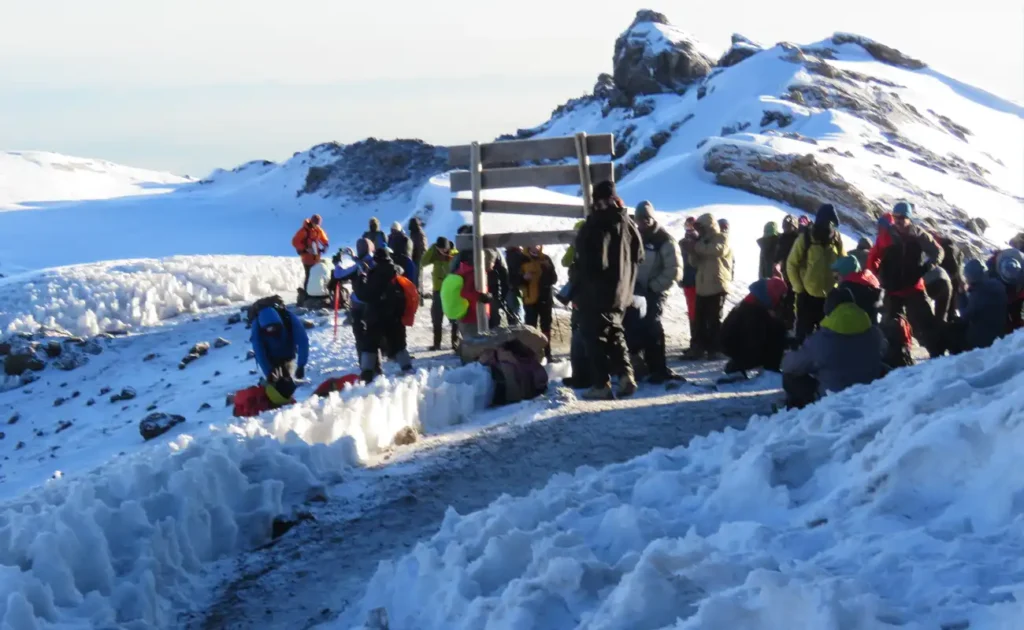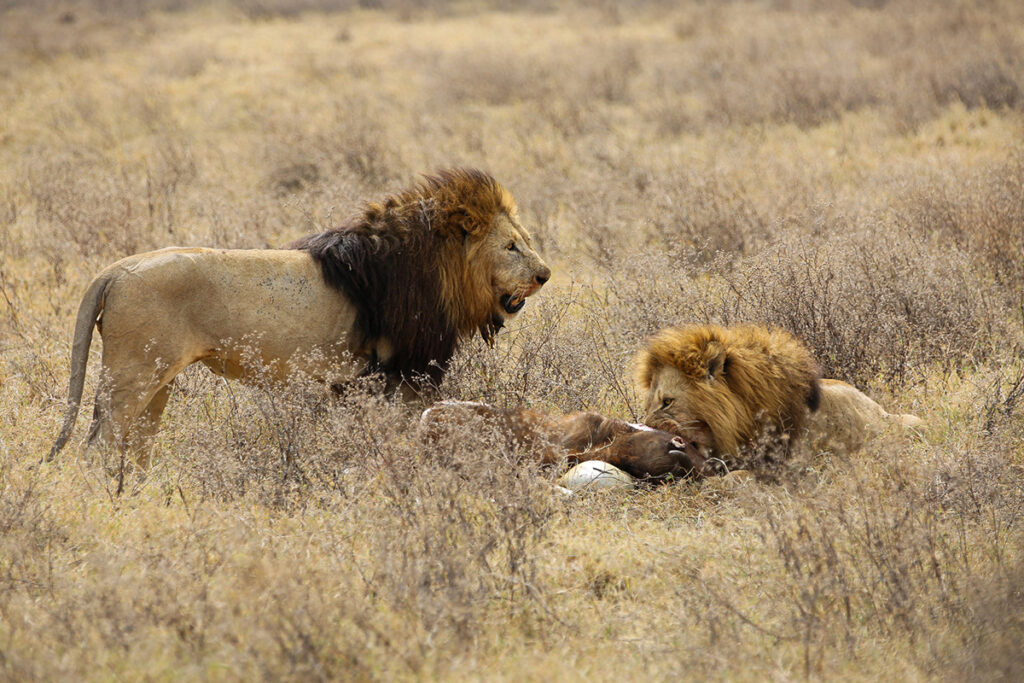Conquering Kilimanjaro through the Umbwe Route is likened to embarking on a passage through time, where each step rewrites your journey of endurance and resilience. Known for its steep ascents and fewer fellow adventurers, this itinerary offers a unique blend of solitude and challenge. The success rate for Umbwe trekkers is surprisingly high for those who prepare well, further validating its rewarding nature.
The 7-day Umbwe itinerary offers a dual benefit: less crowded paths and a scenic route with incredible biodiversity. Starting your trek in the tropical rainforest, transitioning to alpine meadows, and finally ascending to the barren summit, the trek provides a vivid representation of Kilimanjaro’s varied ecosystems. Approximately 35,000 trekkers attempt to climb Kilimanjaro each year, with the Umbwe Route gaining popularity for its raw, untouched trails and the immense sense of accomplishment it delivers.

7-Day Umbwe Itinerary: A Rewarding Kilimanjaro Trek
Climbing Kilimanjaro via the Umbwe Route is known for its steep and challenging paths. This route is perfect for those seeking a less crowded adventure. Though it starts out steep, the views along the way are breathtaking. Trekkers pass through lush rainforests and, eventually, alpine deserts. It’s an experience that promises to stay with you long after the journey ends.
The 7-day itinerary offers enough time to adjust to the altitude, which is a key factor for a successful trek. You start lower in the rainforest and gradually move to higher altitudes. This gradual ascent helps your body adapt, reducing the risk of altitude sickness. Each day brings new terrain and challenges, keeping the trek exciting. Rest days are built into the schedule to give your body the necessary time to recover.
Setting up camp under the starry Kilimanjaro sky is a memorable part of the journey. Camps are well-organized, providing a safe resting place for trekkers. As you climb higher, the nights get colder, and the air gets thinner. It’s important to stay hydrated and move at a slow, steady pace. Guides are there to support and encourage every step of the way.
The final push to the summit is the most challenging yet rewarding part. Starting before dawn, trekkers aim to be at Uhuru Peak by sunrise. On reaching the summit, climbers are rewarded with panoramic views of the African landscape. After taking in the sights, the descent begins, offering a new perspective. This trek is not just a hike; it’s a journey of personal achievement and natural beauty.
The Kilimanjaro Grand Traverse Route Trek – Day by Day Itinerary with maps
Why Choose the Umbwe Route for Climbing Kilimanjaro
The Umbwe Route is perfect for trekkers who crave adventure and solitude. Unlike other routes, it’s less crowded, giving climbers a more personal experience. This path is also known for its stunning scenery. It offers dramatic views right from the get-go. Nature lovers will find it a paradise with diverse landscapes.
One big advantage is its direct path to the summit. Although it’s steeper, it allows trekkers to ascend quickly. With fewer winding paths, climbers can focus more on the climb itself. This makes the Umbwe Route a top choice for those with a limited time. However, due to its steepness, climbers need to be in good physical shape.
The route is well-marked and maintained, ensuring the safety of every adventurer. Experienced guides lead the way, offering tips and support. They help manage altitude issues and coordinate the trekking pace. As trekkers go higher, reaching certain points becomes a shared victory. Guides also share insights about the flora and fauna along the route.
The sense of accomplishment on the Umbwe Route is unmatched. Reaching the summit is not just about making it to the top; it’s about the journey. Each stage of the route offers unique challenges and rewards. From treetops to glaciers, the experience is one to remember. It’s a true test of endurance and willpower, with every step more rewarding than the last.
Uncovering the Beauty of the Umbwe Route
The Umbwe Route is not just a path to the top; it’s a journey through diverse ecosystems. Beginning in a lush rainforest, trekkers are greeted by towering trees and vibrant flora. The forest is alive with the sound of birds and the occasional sight of monkeys. As you ascend, the landscape changes dramatically. Each new environment reveals a different side of Kilimanjaro’s beauty.
The middle section of the trek transitions into heath and moorland. Here, low shrubs and unique plant species dominate the scenery. This area often feels like an entirely different world compared to the rainforest below. With every step, the air becomes crisper and the views more expansive. It’s an excellent spot for photographers and nature enthusiasts alike.
Higher up, alpine deserts take over, offering a stark but stunning contrast. The rocky terrain and sparse vegetation make this section a true test of endurance. Despite its barren appearance, the alpine desert has its own unique charm. The open skies and distant peaks create a sense of vastness. It’s a reminder of the raw, natural beauty that few places on Earth can offer.
The final approach to the summit traverses icy glaciers and snowfields. This part of the climb offers breathtaking views that stretch for miles. The sense of isolation and grandeur is overwhelming. Each sunrise and sunset paints the sky in hues that are hard to forget. Completing this journey brings not only the reward of reaching Uhuru Peak but also a deep appreciation for the diverse landscapes encountered along the way.
Preparation and Expectations for the 7-Day Umbwe Itinerary
Getting ready for the 7-day Umbwe trek requires careful planning and physical preparation. It’s important to build your stamina before you set out on this adventure. Regular hikes, cardio exercises, and strength training can help you get in shape. You should also pay attention to your gear, ensuring you have suitable clothing, hiking boots, and a backpack. Having the right equipment will make your trek safer and more comfortable.
Acclimatization plays a key role in this itinerary by helping your body adjust to the altitude changes. Although the ascent is steep, the 7-day schedule includes rest days to aid this process. Hydration and slow pacing are extremely crucial during this time. Guides provide advice on how to adapt and when to take breaks. Their experience on the Umbwe Route is invaluable.
Trekkers can expect a wide range of weather conditions on this journey. The start in the rainforest is usually damp and cool. As you climb higher, the temperatures drop, especially at night. A good sleeping bag and layers of clothing are essential. Weather can change quickly, so staying prepared is vital for your comfort.
Meals on the trek are designed to keep you energized and healthy. Porters carry and prepare food ranging from fresh fruits to hot meals. Eating regularly helps maintain your energy and supports acclimatization. It’s great to have a variety of foods that cater to different dietary needs. The menu is often simple but nutritious, fueling the body for the trek ahead.
Expect to bond with fellow trekkers and guides along the way. Sharing stories, challenges, and successes creates strong friendships. The camaraderie adds a wonderful dimension to the journey. By the end of the trek, many find that these relationships are the most cherished part of the adventure. It’s this shared human experience that makes the 7-day Umbwe itinerary so rewarding.
Challenges and Triumphs Along the Umbwe Route
The Umbwe Route is known for its steep, challenging paths. One of the biggest hurdles is the physical demand of the ascent. Trekkers need strong legs and good endurance to tackle the steep slopes. The quick elevation gain can also cause altitude sickness, making slow and steady progress important. Despite these physical challenges, the sense of achievement upon completion is immense.
Weather conditions add another layer of difficulty to the trek. The route starts in a rainforest where it’s often wet and slippery. Higher up, temperatures drop significantly, especially at night. Trekkers must be prepared for rain, cold, and even snow. Proper gear and clothing are essential to handle these varying conditions.
Overcoming mental challenges is just as important as physical preparation. The steep, unrelenting climb can test one’s determination and resilience. Trekkers often face moments of doubt and exhaustion. Staying motivated and encouraging each other is key. The shared experience fosters a strong sense of camaraderie among the trekking group.
The rewards of conquering the Umbwe Route are plentiful. Reaching key landmarks like Barranco Wall provides a real sense of progress. The final push to the summit offers breathtaking views and an unparalleled feeling of triumph. The journey down is also fulfilling, offering a new perspective on the landscapes previously climbed. Overall, the blend of challenges and victories makes the Umbwe Route a truly rewarding experience.
Leaving a Footprint: Your Impact on the Umbwe Experience
Hiking the Umbwe Route isn’t just about conquering Kilimanjaro; it’s also about the footprint you leave behind. Being a responsible trekker means minimizing your impact on the environment. You can help by sticking to marked trails, avoiding shortcuts, and staying on designated paths. This prevents erosion and protects fragile plant life. Always remember, every little bit helps preserve Kilimanjaro for future trekkers.
Waste management is crucial on such treks. Carry all trash with you until it can be properly disposed of. This includes small items like candy wrappers and bottle caps. Maintaining this practice keeps the trail clean and enjoyable for everyone. Guides and porters usually handle larger waste removal. Your efforts, combined with theirs, make a significant difference.
Supporting local communities is another important aspect. Hiring local guides and porters contributes directly to the economy. These professionals are well-versed in the landscape and cultural heritage. They also ensure safety and offer invaluable insights. Choosing reputable companies that treat their staff well is crucial to maintaining ethical tourism.
Another way to leave a positive footprint is through donations or volunteering. Many organizations working in the area focus on environmental protection and community development. Helping out can be as simple as donating gear or more involved like participating in conservation projects. Your contribution can lead to long-lasting benefits for the Umbwe Route and its surrounding communities.
Finally, educating yourself and others about the significance of Kilimanjaro and its ecosystem is vital. Awareness leads to better actions and decisions while trekking. Share your knowledge and experiences with friends and family. This spreads the message of responsible tourism. Together, we can ensure the beauty of the Umbwe Route endures for generations to come.
Key Takeaways
- The Umbwe Route is challenging and rewarding for skilled trekkers.
- It includes diverse landscapes from rainforests to alpine deserts.
- Acclimatization days help prevent altitude sickness on the trek.
- This route offers a quieter, more solitary trekking experience.
- Your journey helps preserve Kilimanjaro by following eco-friendly practices.
.jpg)



